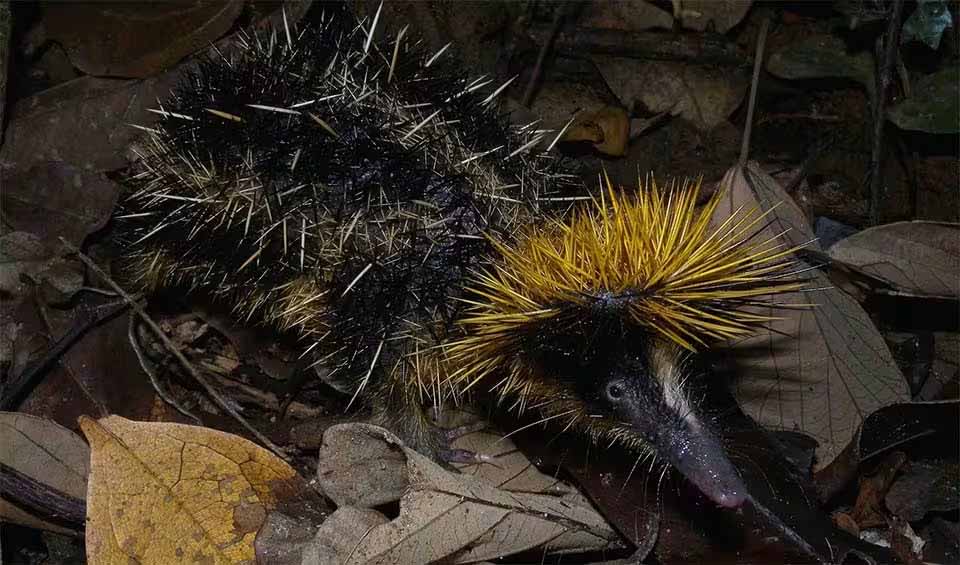This little creature is easily recognizable by its unique appearance, which sets it apart from other animals. It has a striking pattern of yellow and black stripes running down its body, with sharp spines covering its back and sides. These spines are not just for show—they play an important role in the tenrec’s defense against predators. When threatened, the lowland streaked tenrec can raise its spines to make itself look bigger and more intimidating. In some cases, it can even use these spines to deliver a sharp jab to anything that gets too close.
One of the most remarkable features of the lowland streaked tenrec is its ability to produce sound using its spines. This process, called stridulation, is something you might expect to find in insects like crickets, but it’s rare in mammals. The tenrec rubs specialized spines together to create a series of clicking sounds. These sounds are used to communicate with other tenrecs, particularly between mothers and their young. This form of communication is especially useful in the dense underbrush of the rainforest, where visibility is low and staying in touch with family members can be challenging.
These tenrecs are adapted to life in the lowland rainforests of Madagascar, where they thrive in the warm, humid environment. They are active both during the day and at night, depending on the availability of food and the level of threat from predators. The dense rainforest provides plenty of cover, but it also means that the tenrec has to be constantly on the lookout for danger. Its spiny coat and ability to hide in small burrows offer some protection from larger predators.
Distribution
 Madagascar
MadagascarAnything we've missed?
Help us improve this page by suggesting edits. Glory never dies!
Suggest an editGet to know me
Terrestrial / Aquatic
Altricial / Precocial
Polygamous / Monogamous
Dimorphic (size) / Monomorphic
Active: Diurnal / Nocturnal
Social behavior: Solitary / Pack / Herd
Diet: Carnivore / Herbivore / Omnivore / Piscivorous / Insectivore
Migratory: Yes / No
Domesticated: Yes / No
Dangerous: Yes / No




